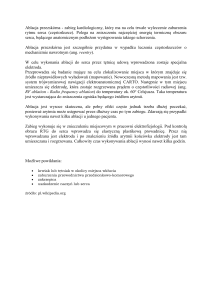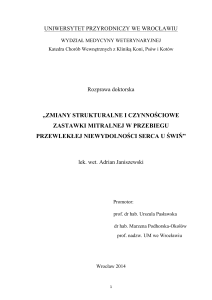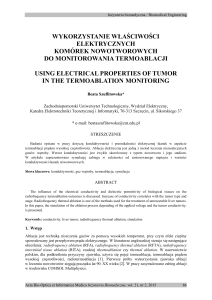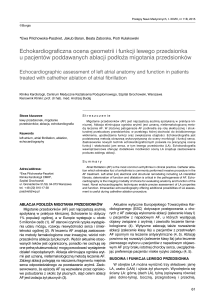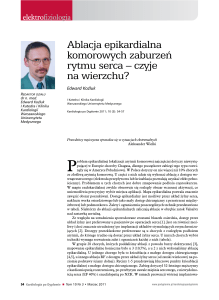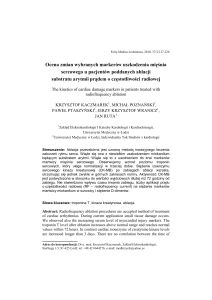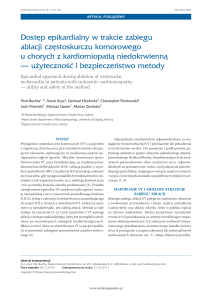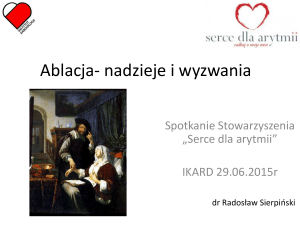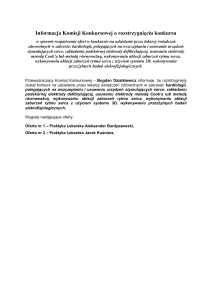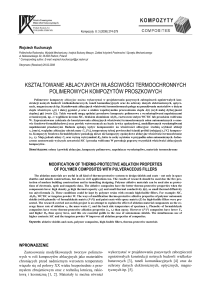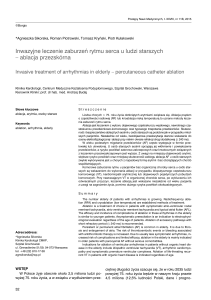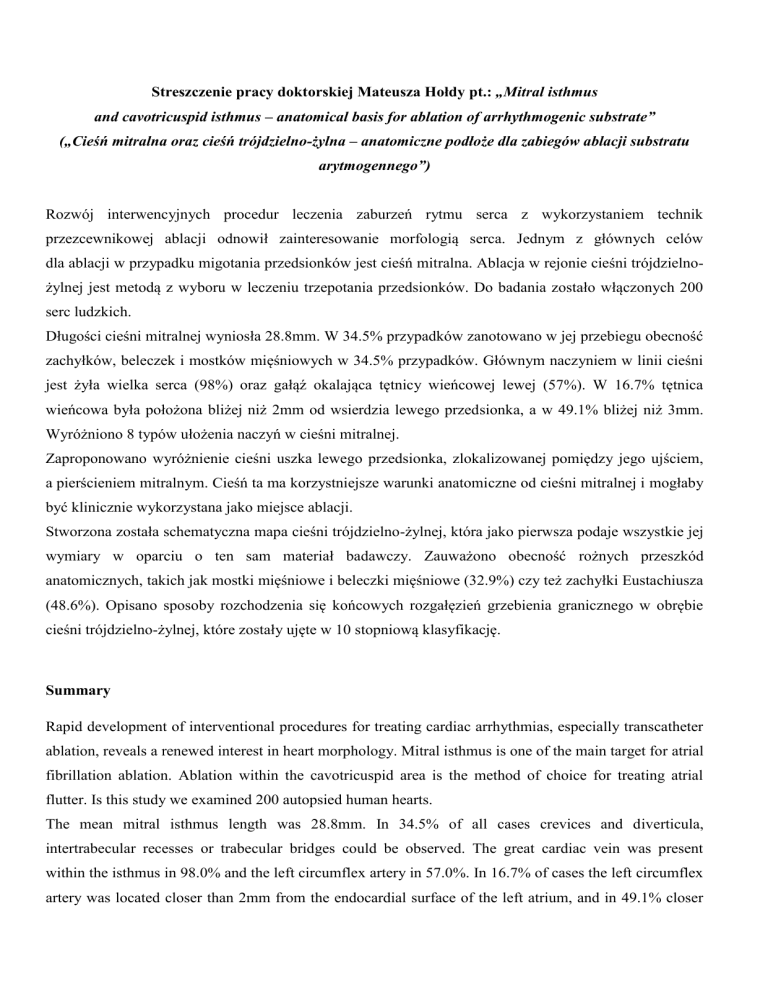
Streszczenie pracy doktorskiej Mateusza Hołdy pt.: „Mitral isthmus
and cavotricuspid isthmus – anatomical basis for ablation of arrhythmogenic substrate”
(„Cieśń mitralna oraz cieśń trójdzielno-żylna – anatomiczne podłoże dla zabiegów ablacji substratu
arytmogennego”)
Rozwój interwencyjnych procedur leczenia zaburzeń rytmu serca z wykorzystaniem technik
przezcewnikowej ablacji odnowił zainteresowanie morfologią serca. Jednym z głównych celów
dla ablacji w przypadku migotania przedsionków jest cieśń mitralna. Ablacja w rejonie cieśni trójdzielnożylnej jest metodą z wyboru w leczeniu trzepotania przedsionków. Do badania zostało włączonych 200
serc ludzkich.
Długości cieśni mitralnej wyniosła 28.8mm. W 34.5% przypadków zanotowano w jej przebiegu obecność
zachyłków, beleczek i mostków mięśniowych w 34.5% przypadków. Głównym naczyniem w linii cieśni
jest żyła wielka serca (98%) oraz gałąź okalająca tętnicy wieńcowej lewej (57%). W 16.7% tętnica
wieńcowa była położona bliżej niż 2mm od wsierdzia lewego przedsionka, a w 49.1% bliżej niż 3mm.
Wyróżniono 8 typów ułożenia naczyń w cieśni mitralnej.
Zaproponowano wyróżnienie cieśni uszka lewego przedsionka, zlokalizowanej pomiędzy jego ujściem,
a pierścieniem mitralnym. Cieśń ta ma korzystniejsze warunki anatomiczne od cieśni mitralnej i mogłaby
być klinicznie wykorzystana jako miejsce ablacji.
Stworzona została schematyczna mapa cieśni trójdzielno-żylnej, która jako pierwsza podaje wszystkie jej
wymiary w oparciu o ten sam materiał badawczy. Zauważono obecność rożnych przeszkód
anatomicznych, takich jak mostki mięśniowe i beleczki mięśniowe (32.9%) czy też zachyłki Eustachiusza
(48.6%). Opisano sposoby rozchodzenia się końcowych rozgałęzień grzebienia granicznego w obrębie
cieśni trójdzielno-żylnej, które zostały ujęte w 10 stopniową klasyfikację.
Summary
Rapid development of interventional procedures for treating cardiac arrhythmias, especially transcatheter
ablation, reveals a renewed interest in heart morphology. Mitral isthmus is one of the main target for atrial
fibrillation ablation. Ablation within the cavotricuspid area is the method of choice for treating atrial
flutter. Is this study we examined 200 autopsied human hearts.
The mean mitral isthmus length was 28.8mm. In 34.5% of all cases crevices and diverticula,
intertrabecular recesses or trabecular bridges could be observed. The great cardiac vein was present
within the isthmus in 98.0% and the left circumflex artery in 57.0%. In 16.7% of cases the left circumflex
artery was located closer than 2mm from the endocardial surface of the left atrium, and in 49.1% closer
than 3mm. We were able to detect eight different patterns of mutual blood vessels arrangement within the
mitral isthmus line.
We proposed the left atrial appendage isthmus line (between the margin of the left atrial appendage
orifice and the margin of the mitral annulus) for potential clinical use. This area have favorable anatomy
and could be clinically used as a target for catheter ablation.
We have created an anatomical model of the cavotricuspid isthmus area which can be helpful
in performing electrocardiological procedures. The presence of intertrabecular recesses (25.0%),
trabecular bridges (12.9%) and sub-Eustachian recesses (48.6%) within the cavotricuspid isthmus can
make ablation more difficult. We have presented the macroscopic patterns of final ramifications of the
terminal crest within the isthmus (10-step classification).

